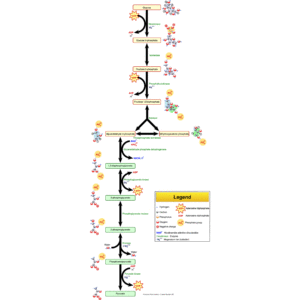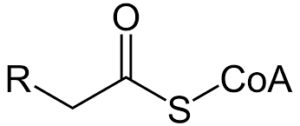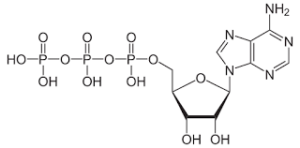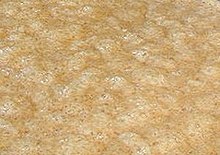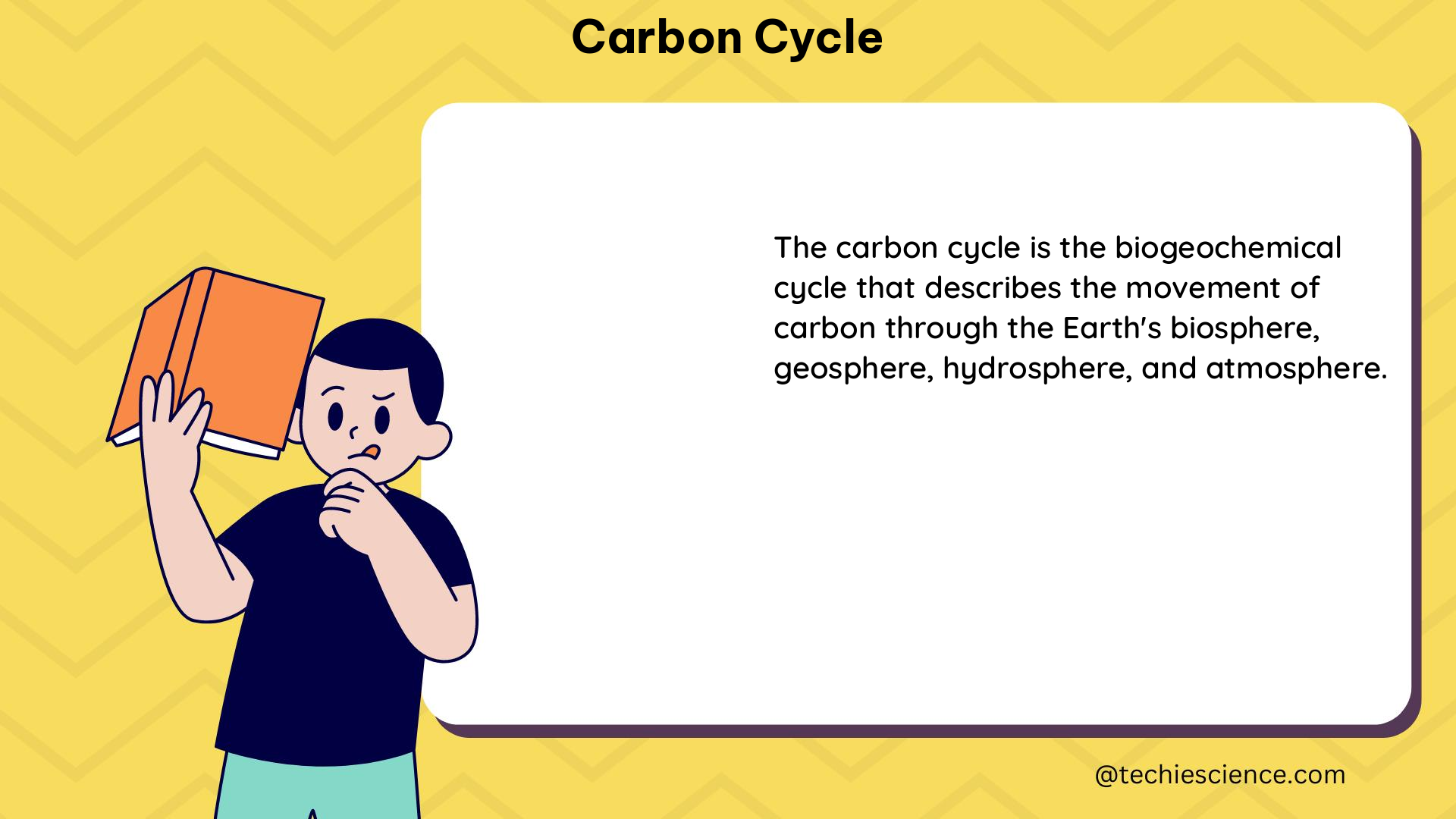The Krebs cycle, also known as the citric acid cycle or the tricarboxylic acid cycle, is a crucial part of cellular respiration. It takes place in the mitochondria of eukaryotic cells and is responsible for generating energy in the form of ATP. However, it is important to note that the Krebs cycle is not directly involved in photosynthesis. Photosynthesis occurs in the chloroplasts of plant cells and involves the conversion of light energy into chemical energy in the form of glucose. While both processes are essential for the survival of living organisms, they are distinct and occur in different cellular compartments.
Key Takeaways
| Fact | Description |
|---|---|
| 1. | The Krebs cycle is a part of cellular respiration. |
| 2. | It takes place in the mitochondria of eukaryotic cells. |
| 3. | The Krebs cycle generates energy in the form of ATP. |
| 4. | Photosynthesis occurs in the chloroplasts of plant cells. |
| 5. | Photosynthesis converts light energy into glucose. |
Understanding the Krebs Cycle
The Krebs Cycle, also known as the citric acid cycle or the tricarboxylic acid cycle, is a vital part of cellular respiration. It is a metabolic pathway that occurs in the mitochondria of eukaryotic cells, including plant cells. This cycle plays a crucial role in the conversion of glucose into ATP, the energy currency of the cell. Let’s delve deeper into the various aspects of the Krebs Cycle.
Definition of Krebs Cycle
The Krebs Cycle is a series of biochemical reactions that take place in the mitochondria. It is a complex metabolic pathway that involves the oxidation of acetyl-CoA, a molecule derived from the breakdown of glucose during glycolysis. This cycle is named after its discoverer, Sir Hans Krebs, who elucidated its steps in the 1930s.
The Metabolic Pathway of Krebs Cycle
The Krebs Cycle is a series of eight interconnected reactions that occur in a cyclic manner. It starts with the combination of acetyl-CoA and oxaloacetate, forming citrate. Through a series of enzymatic reactions, citrate is gradually converted back into oxaloacetate, completing the cycle. Along the way, several important molecules are produced, including NADH, FADH2, and ATP.
Why is the Krebs Cycle a Cycle?
The Krebs Cycle is referred to as a cycle because the final product, oxaloacetate, is regenerated at the end of the pathway. This allows the cycle to continue, enabling the continuous production of energy-rich molecules. The regeneration of oxaloacetate is crucial for the efficient functioning of the Krebs Cycle and the overall process of cellular respiration.
How Does Krebs Cycle Work?
The Krebs Cycle works by breaking down acetyl-CoA, derived from glucose, into carbon dioxide and energy-rich molecules. Each step of the cycle is catalyzed by specific enzymes, ensuring the smooth progression of the pathway. The energy released during these reactions is captured in the form of NADH and FADH2, which will later participate in oxidative phosphorylation to produce ATP.
Does Krebs Cycle Produce Energy?
Yes, the Krebs Cycle is an essential step in ATP production. While the cycle itself does not directly produce ATP, it generates energy-rich molecules, such as NADH and FADH2, which are utilized in the subsequent process of oxidative phosphorylation. This final step of cellular respiration occurs in the mitochondria and leads to the production of ATP through the electron transport chain.
In summary, the Krebs Cycle is a crucial part of cellular respiration, playing a central role in the conversion of glucose into ATP. It is a cyclic metabolic pathway that produces energy-rich molecules and serves as a bridge between glycolysis and oxidative phosphorylation. Understanding the intricacies of the Krebs Cycle is fundamental to comprehending the biochemistry of energy conversion in living organisms.
The Krebs Cycle and Photosynthesis
Is Krebs Cycle Part of Photosynthesis?
The Krebs Cycle, also known as the Citric Acid Cycle, is not directly part of photosynthesis. Photosynthesis is the process by which plants and other photosynthetic organisms convert sunlight into chemical energy in the form of glucose. On the other hand, the Krebs Cycle is a biochemical pathway that occurs during cellular respiration, which is the process by which cells convert glucose into ATP (adenosine triphosphate), the energy currency of the cell.
The Role of Krebs Cycle in Photosynthesis
Although the Krebs Cycle is not directly involved in photosynthesis, it indirectly plays a crucial role in the overall process. During photosynthesis, plants capture sunlight energy through light-dependent reactions that occur in the chloroplasts. This energy is then used to convert carbon dioxide and water into glucose through a series of light-independent reactions, also known as the Calvin cycle.
The glucose produced during photosynthesis is then broken down in the cells through a process called glycolysis. Glycolysis is the first step of cellular respiration, where glucose is converted into pyruvate, producing ATP and NADH in the process. The pyruvate then enters the mitochondria, where it undergoes further breakdown in the Krebs Cycle.
In the Krebs Cycle, the pyruvate is converted into acetyl-CoA, which enters a series of reactions that produce NADH and FADH2, as well as ATP through substrate-level phosphorylation. These high-energy molecules, NADH and FADH2, are then used in the electron transport chain to generate even more ATP through oxidative phosphorylation.
So, while the Krebs Cycle is not directly part of photosynthesis, it is an essential component of cellular respiration, which ultimately provides the energy needed for photosynthesis to occur.
Is the Citric Acid Cycle Part of Photosynthesis?
The Citric Acid Cycle, also known as the Krebs Cycle, is not part of photosynthesis. As mentioned earlier, photosynthesis is the process by which plants convert sunlight energy into glucose, while the Krebs Cycle is a series of biochemical reactions that occur during cellular respiration.
However, it is important to note that both photosynthesis and the Krebs Cycle are interconnected through the overall metabolic processes of the cell. Photosynthesis produces glucose, which is then broken down in the cells through glycolysis and enters the Krebs Cycle to generate ATP and other high-energy molecules.
In summary, while the Krebs Cycle is not directly part of photosynthesis, it plays a vital role in the overall energy conversion and metabolic processes of the cell, which are essential for the production of glucose during photosynthesis.
The Krebs Cycle in Cellular Respiration
Is the Krebs Cycle Part of Cellular Respiration?
Yes, the Krebs Cycle, also known as the citric acid cycle, is an essential part of cellular respiration. It is a series of biochemical reactions that occur in the mitochondria of cells, playing a crucial role in the production of ATP (adenosine triphosphate), the energy currency of the cell.
Location of Krebs Cycle in Cellular Respiration
The Krebs Cycle takes place in the mitochondria, which are often referred to as the “powerhouses” of the cell. These organelles are responsible for energy conversion and play a vital role in various metabolic processes. Within the mitochondria, the Krebs Cycle occurs in the matrix, the innermost compartment.
What is Krebs Cycle in Cellular Respiration?
The Krebs Cycle is a complex metabolic pathway that completes the oxidation of glucose, derived from the breakdown of carbohydrates, fats, and proteins. It is a cyclic process that involves a series of enzymatic reactions, resulting in the production of ATP, carbon dioxide (CO2), and high-energy electron carriers such as NADH and FADH2.
Let’s take a closer look at the steps involved in the Krebs Cycle:
-
Step 1: Acetyl-CoA Formation – Before entering the Krebs Cycle, pyruvate, a product of glycolysis, is converted into acetyl-CoA. This step occurs in the mitochondria and generates NADH as a byproduct.
-
Step 2: Citrate Formation – Acetyl-CoA combines with oxaloacetate to form citrate, a six-carbon molecule. This reaction is catalyzed by the enzyme citrate synthase.
-
Step 3: Isomerization and Decarboxylation – Through a series of enzymatic reactions, citrate is isomerized and undergoes decarboxylation, resulting in the release of two molecules of CO2. This step generates NADH and ATP.
-
Step 4: Regeneration of Oxaloacetate – The remaining four-carbon molecule undergoes a series of reactions, leading to the regeneration of oxaloacetate. This step generates more NADH and FADH2.
The Krebs Cycle is a crucial part of cellular respiration because it serves as a major source of high-energy electron carriers, NADH and FADH2. These carriers play a vital role in oxidative phosphorylation, the final step of cellular respiration, where ATP is produced through the electron transport chain.
In summary, the Krebs Cycle is an integral part of cellular respiration, occurring in the mitochondria and playing a key role in ATP production and the release of carbon dioxide. It is a complex metabolic pathway that involves several enzymatic reactions, contributing to the overall energy production and metabolic processes within the cell.
The Krebs Cycle in Different Organisms
The Krebs Cycle, also known as the citric acid cycle, is a key component of cellular respiration in various organisms. It is a biochemical pathway that plays a crucial role in the production of ATP, the energy currency of cells. This cycle takes place within the mitochondria, the powerhouse of the cell, and is responsible for the conversion of glucose into carbon dioxide, generating energy in the process.
Do Plants Use the Krebs Cycle?
In plant biology, the Krebs Cycle is not directly involved in the process of photosynthesis. Instead, plants utilize a different set of metabolic processes known as the light-dependent reactions and the Calvin cycle to convert sunlight into glucose. These light-independent reactions occur in the chloroplasts and are responsible for carbon fixation, where carbon dioxide is converted into glucose.
While the Krebs Cycle does not play a direct role in glucose production in plants, it is still an essential part of their overall metabolism. The energy produced through the Krebs Cycle in plants is used for various cellular processes, including growth, reproduction, and defense mechanisms. Additionally, the Krebs Cycle helps in the regeneration of molecules such as NADH and FADH2, which are crucial for other metabolic pathways.
Can the Krebs Cycle Occur Without Glycolysis?
The Krebs Cycle is closely linked to glycolysis, another metabolic pathway that breaks down glucose to produce energy. Glycolysis occurs in the cytoplasm of cells and is the first step in the process of cellular respiration. It converts glucose into pyruvate, which then enters the mitochondria to participate in the Krebs Cycle.
While the Krebs Cycle is typically preceded by glycolysis, it is possible for the cycle to occur without it under certain conditions. In some organisms, such as bacteria, the Krebs Cycle can be fueled by alternative carbon sources, such as fatty acids or amino acids. These organisms have evolved mechanisms to bypass glycolysis and directly enter the Krebs Cycle, ensuring energy production even in the absence of glucose.
In summary, the Krebs Cycle is a fundamental process in cellular respiration, occurring in various organisms. While plants do not directly utilize the Krebs Cycle for glucose production, it still plays a vital role in their overall metabolism. Additionally, the Krebs Cycle can occur without glycolysis in certain organisms, showcasing the flexibility and adaptability of metabolic processes.
Conclusion
In conclusion, the Krebs cycle, also known as the citric acid cycle, is not a part of photosynthesis. The Krebs cycle is a series of chemical reactions that occur in the mitochondria of cells, and it is involved in the process of cellular respiration. On the other hand, photosynthesis is the process by which plants, algae, and some bacteria convert sunlight into chemical energy in the form of glucose. While both processes are essential for life, they occur in different cellular compartments and serve different purposes. The Krebs cycle is part of the energy production process, while photosynthesis is responsible for capturing and storing energy from the sun.
Is Purine Included in the Krebs Cycle?
Purine is not directly included in the Krebs cycle, but it plays a significant role in cellular metabolism. The breakdown of purine-containing compounds from purine foods to know produces intermediates like AMP and GMP, which participate in energy production via nucleotide metabolism pathways. Furthermore, purine nucleotides serve as essential components of DNA and RNA synthesis, influencing various cellular functions.
Frequently Asked Questions
Is Krebs Cycle Light Dependent?
No, the Krebs Cycle, also known as the citric acid cycle or the tricarboxylic acid cycle, is not light-dependent. It is a series of biochemical reactions that occur in the mitochondria of cells. The Krebs Cycle is an essential part of cellular respiration, which is the process by which cells convert glucose into ATP, the energy currency of the cell. Unlike the light-dependent reactions that occur in chloroplasts during photosynthesis, the Krebs Cycle does not require sunlight to proceed.
Is Krebs Cycle Substrate Level Phosphorylation?
No, the Krebs Cycle does not involve substrate-level phosphorylation. Substrate-level phosphorylation is a process in which ATP is directly produced by the transfer of a phosphate group from a substrate molecule to ADP. While substrate-level phosphorylation does occur in other metabolic pathways, such as glycolysis, it does not occur in the Krebs Cycle. Instead, the Krebs Cycle generates energy-rich molecules, such as NADH and FADH2, which are then used in the subsequent oxidative phosphorylation step to produce ATP.
What is Krebs Cycle in Mitochondria?
The Krebs Cycle is a key component of aerobic respiration and takes place in the mitochondria of eukaryotic cells. It is a series of enzymatic reactions that play a crucial role in the metabolic process of converting glucose into usable energy. The cycle begins with the conversion of pyruvate, a product of glycolysis, into acetyl-CoA, which then enters the Krebs Cycle. Throughout the cycle, carbon dioxide is released, and energy-rich molecules such as NADH and FADH2 are produced. These molecules go on to participate in the electron transport chain, where they contribute to the production of ATP through oxidative phosphorylation.
In summary, the Krebs Cycle is a fundamental part of cellular respiration, occurring in the mitochondria of cells. It is not light-dependent and does not involve substrate-level phosphorylation. Instead, it plays a crucial role in the conversion of glucose into ATP through a series of biochemical reactions.
Is Purine Included in the Krebs Cycle?
Purine is not directly included in the Krebs cycle, but it plays a significant role in cellular metabolism. The breakdown of purine-containing compounds from purine foods to know produces intermediates like AMP and GMP, which participate in energy production via nucleotide metabolism pathways. Furthermore, purine nucleotides serve as essential components of DNA and RNA synthesis, influencing various cellular functions.
Are the Krebs cycle and electron transport chain interconnected in photosynthesis?
In photosynthesis, the Krebs cycle and electron transport chain are integral processes that work together to generate ATP and produce energy. While the Krebs cycle occurs in the mitochondria during cellular respiration, it also plays a role in the light-independent reactions of photosynthesis. These reactions take place in the chloroplasts, where the electron transport chain transfers high-energy electrons generated by the Krebs cycle in the mitochondria to produce ATP through chemiosmosis. To understand the interplay between the Krebs cycle and electron transport in photosynthesis, refer to the article on Krebs cycle and electron transport.
Frequently Asked Questions
What is the location of the Krebs cycle in cellular respiration?
The Krebs cycle, also known as the citric acid cycle, takes place in the mitochondria of a cell during the process of cellular respiration. It is here where glucose is further broken down to produce energy in the form of ATP.
How does the Krebs cycle work?
The Krebs cycle works by breaking down acetyl CoA, derived from pyruvate, into carbon dioxide and hydrogen atoms. This process involves a series of reactions that are catalyzed by enzymes. The hydrogen atoms are then used to produce ATP through oxidative phosphorylation.
Is the citric acid cycle part of photosynthesis?
No, the citric acid cycle is not part of photosynthesis. It is a part of cellular respiration, a process that occurs in the mitochondria of cells to generate ATP. Photosynthesis, on the other hand, occurs in the chloroplasts of plant cells and involves the conversion of light energy into chemical energy.
Is the Krebs cycle part of cellular respiration?
Yes, the Krebs cycle is a crucial part of cellular respiration. It is the second stage of this process, following glycolysis, and it precedes the electron transport chain. The Krebs cycle is where most of the energy is harvested from the breakdown of glucose.
Is the Krebs cycle light-dependent?
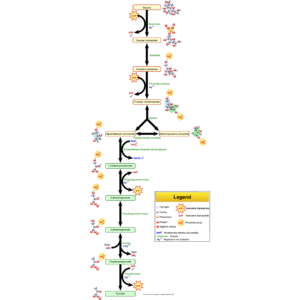
No, the Krebs cycle is not light-dependent. It is a part of cellular respiration, which is a process that occurs regardless of the presence of light. In contrast, the light-dependent reactions are a part of photosynthesis, which only occur in the presence of light.
What is the Krebs cycle in cellular respiration?
The Krebs cycle, also known as the citric acid cycle, is a series of chemical reactions used by all aerobic organisms to release stored energy through the oxidation of acetyl-CoA derived from carbohydrates, fats, and proteins into ATP and carbon dioxide.
Do plants use the Krebs cycle?
Yes, plants do use the Krebs cycle. It occurs in their mitochondria, just like in animal cells, as part of cellular respiration. This process allows plants to break down the glucose produced during photosynthesis to generate ATP, which is used for various metabolic processes.
Is the Krebs cycle part of photosynthesis?
No, the Krebs cycle is not a part of photosynthesis. It is a part of cellular respiration, a process that occurs in the mitochondria of cells to generate ATP. Photosynthesis, on the other hand, occurs in the chloroplasts of plant cells and involves the conversion of light energy into chemical energy.
What is the role of the cycle substrate in the Krebs cycle?
The cycle substrate in the Krebs cycle is acetyl CoA, which is derived from the breakdown of glucose during glycolysis. This substrate enters the Krebs cycle and is further broken down through a series of enzyme-catalyzed reactions to produce ATP, NADH, FADH2, and carbon dioxide.
What is the relationship between the Krebs cycle and phosphorylation?
The Krebs cycle and phosphorylation are related as they are both key stages in the process of cellular respiration. The Krebs cycle generates NADH and FADH2, which are then used in the process of oxidative phosphorylation to generate ATP, the cell’s main source of energy.
Also Read:
